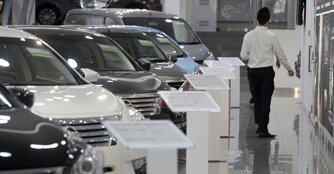Dollars and sense of the new Vehicular Emissions Scheme
29 Dec 2017|3,836 views
The Vehicular Emissions Scheme (VES) will come into effect on Monday (1st January). It is a scheme that is part of Singapore's ongoing efforts to improve air quality. It replaces the Carbon Emissions-based Vehicle Scheme (CEVS), which calculates tax rebates or surcharges for new cars based on the amount of carbon dioxide (CO2) they produce.

The amount of rebate or surcharge is determined by the worst-performing of the five emissions. But for the first six months, particulate matter will not be measured. This is to allow the industry more time to adjust.
Many cars, which have low CO2 emissions - such as diesels - actually produce a lot more of the other noxious pollutants. The VES aims to strike a balance between keeping CO2 emissions in check as they contribute to global warming, and protecting human health from the other pollutants.
Existing cars on the road will not be affected. The VES affects cars, which are to be registered here from 1st January. What are the rebates and surcharges? The VES will have two bands - rebate of either $10,000 or $20,000, and surcharge of either $10,000 or $20,000. This is unlike the CEVS, which has rebates and surcharges of $5,000, $10,000, $15,000 and $30,000.
Most of the current models will see a tax increase as the VES is designed to be more stringent than the CEVS. Those, which enjoy rebates now are likely to fall into the neutral band under the VES, and those in the neutral band now are likely to fall in the surcharge bands.
Will car prices rise? Not necessarily. This is because competition among dealers will be keen and buyers will have a range of choices. Buyers will veer towards cleaner models, forcing car dealers to bring in models, which are cleaner all round.

Hence dealers are unlikely to risk losing market share by passing on all tax increases to the consumers. They will forego some profit margin and are less likely to bid as high as they used to for Certificates of Entitlement (COEs). So the eventual selling price of a car is unlikely to vary vastly from now.
In fact, some cars should become less expensive. These would be luxury performance cars, which currently attract a $30,000 surcharge under the CEVS. Under the VES, they face a maximum penalty of $20,000 to $10,000 less.
Every new car will have to display a VES label, which lists its fuel consumption figure and VES banding. The Land Transport Authority's Fuel Cost Calculator will also go 'live' on 1st January. Car owners can use it to get an idea of a car's banding, since there is usually a positive correlation between fuel economy and emission banding.
The Vehicular Emissions Scheme (VES) will come into effect on Monday (1st January). It is a scheme that is part of Singapore's ongoing efforts to improve air quality. It replaces the Carbon Emissions-based Vehicle Scheme (CEVS), which calculates tax rebates or surcharges for new cars based on the amount of carbon dioxide (CO2) they produce.

The amount of rebate or surcharge is determined by the worst-performing of the five emissions. But for the first six months, particulate matter will not be measured. This is to allow the industry more time to adjust.
Many cars, which have low CO2 emissions - such as diesels - actually produce a lot more of the other noxious pollutants. The VES aims to strike a balance between keeping CO2 emissions in check as they contribute to global warming, and protecting human health from the other pollutants.
Existing cars on the road will not be affected. The VES affects cars, which are to be registered here from 1st January. What are the rebates and surcharges? The VES will have two bands - rebate of either $10,000 or $20,000, and surcharge of either $10,000 or $20,000. This is unlike the CEVS, which has rebates and surcharges of $5,000, $10,000, $15,000 and $30,000.
Most of the current models will see a tax increase as the VES is designed to be more stringent than the CEVS. Those, which enjoy rebates now are likely to fall into the neutral band under the VES, and those in the neutral band now are likely to fall in the surcharge bands.
Will car prices rise? Not necessarily. This is because competition among dealers will be keen and buyers will have a range of choices. Buyers will veer towards cleaner models, forcing car dealers to bring in models, which are cleaner all round.

From next month, cars displayed in showrooms must bear a new VES label, aimed at helping buyers make informed decisions
Hence dealers are unlikely to risk losing market share by passing on all tax increases to the consumers. They will forego some profit margin and are less likely to bid as high as they used to for Certificates of Entitlement (COEs). So the eventual selling price of a car is unlikely to vary vastly from now.
In fact, some cars should become less expensive. These would be luxury performance cars, which currently attract a $30,000 surcharge under the CEVS. Under the VES, they face a maximum penalty of $20,000 to $10,000 less.
Every new car will have to display a VES label, which lists its fuel consumption figure and VES banding. The Land Transport Authority's Fuel Cost Calculator will also go 'live' on 1st January. Car owners can use it to get an idea of a car's banding, since there is usually a positive correlation between fuel economy and emission banding.
Latest COE Prices
July 2025 | 2nd BIDDING
NEXT TENDER: 06 Aug 2025
CAT A$101,102
CAT B$119,101
CAT C$68,600
CAT E$120,000
View Full Results Thank You For Your Subscription.



















